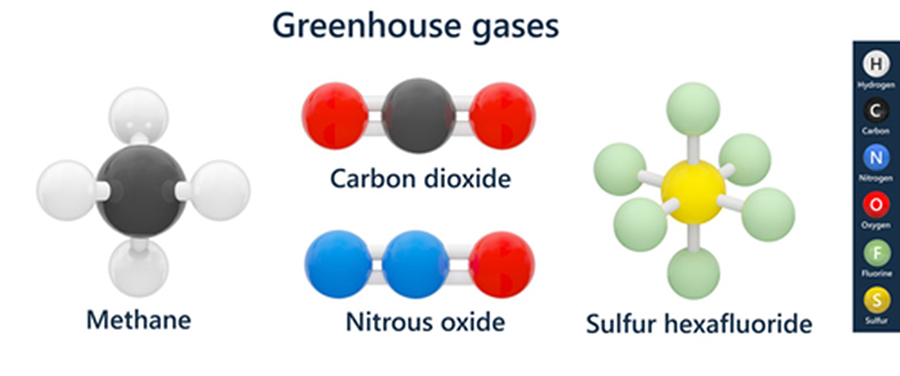Europe moves to phase out electrical sulphur hexafluoride (SF6) gas
Sulphur hexafluoride (SF6) gas is colourless, odourless, non-toxic and five times denser than air. It’s also the world’s most potent greenhouse gas, with a global warming potential 23,500 times more than CO2. With that sort of climate change impact, one might wonder why it’s relevant to the future of an increasingly de-carbonized electrical industry. However, the electrical industry still relies on its excellent electrical insulation properties to prevent short circuits in medium- and high-voltage installations that would otherwise lead to damage, disruption, fire or explosion.
Sulphur hexafluoride is just one of a now infamous family of ‘F-gases’. The EU has banned the use of many of these gases and using SF6 has previously been banned from applications ranging from double glazing insulation to keeping trainer soles inflated.
Contents |
[edit] Proposed EU 2031 phase out
Yet, while SF6 is still deployed in switchgear to ensure electrical safety and reliability, change is on the way. Earlier in 2022, the European Commission proposed that SF6 should be banned from most new electrical equipment by 2031, as part of its broader F-gas reduction plan. Since this move involves products, the Commission’s plans also affect the UK - and various green Euro-groups would like to see a ban even earlier than 2031.
For now, SF6 gas is widely deployed in circuit breakers and switchgear in power stations, wind turbines and electrical sub-stations, to quench arcs and stop short circuits. It has a reliable track record and maintenance requirements are low – which is handy if your equipment is, for example, part of a mega-wind turbine operating in the North Sea. It also provides compact gas-insulated switchgear which is ideal for space-constrained applications.
[edit] MV applications – HV challenges
Even so, following an EU Report, the European Commission concluded that there is no technological barrier to eliminating SF6 in installations up to 145kV*. Indeed, for medium voltage (MV) primary and secondary switchgear, increasingly cost-effective alternatives to SF6 are already available from leading providers such as ABB, Eaton and Schneider. These companies deploy alternatives such as mixed gas, air/solid and vacuum technology. *GE Grid Solutions recently announced a contract with the UK’s SP Energy Networks for the supply of 145 kV SF6-free circuit-breakers.
Finding suitable alternatives to SF6 for even higher voltage installations is, however, more challenging. Even when feasible, the alternatives tend to be more expensive than using SF6 and the Commission is monitoring the situation. Ongoing activity includes GE’s EU-funded 2025 roadmap to extend SF6 free switchgear up to 420kV, and Hitachi ABB Power Grids 380kV substation upgrade with Germany’s TransnetBW.
[edit] Avoiding current emissions
For existing equipment, it’s vitally important that ongoing electrical equipment operation and decommissioning does not let SF6 escape. The Environment Agency oversees UK rules on the effective recovery of the gas, which is necessary when switchgear fails or degrades. However, there is no plan for a blanket requirement to replace existing SF6 switchgear, which would significantly increase the risk of releases.
[edit] Preparing for phase out
The European Commission is handling the phase out of SF6 with care because switchgear is a critical application. However, the alternatives increasingly offer functionality and performance, ready maintenance and no particular end of life challenges. Various manufacturers are continuing to explore the viability of replacement technologies beyond the currently achievable voltages. Meanwhile, alternatives to SF6 offer customers the prospect of future legal compliance and reduced GHG (greenhouse gas) reporting. For both customers and the industry, it’s now time to consider the prospect of an SF6-free future.
[edit] Implications beyond the grid
The Commission’s proposal to ban SF6 in new switchgear has implications beyond network supply. For example, larger commercial buildings that move to MV installations to support fast electric vehicle charging could go SF6 free and:
- provide even greener vehicle charging:
- reduce their reported GHG footprint;
- find it easier to win green building certification and other recognition; and
- future proof their electrical systems.
This article appears on the ECA news and blog site as "Europe moves to phase out electrical sulphur hexafluoride (SF6) gas" dated December 15.
--ECA
[edit] Related articles on Designing Buildings
- Absorption refrigeration.
- BREEAM Impact of refrigerants.
- Chlorofluorocarbons CFCs.
- F gases
- Greenhouse gases.
- HVAC.
- Hydrochlorofluorocarbons HCFCs.
- Kyoto Protocol.
- Montreal Protocol.
- Ozone depleting substance.
- Phase change.
- R22 phase out.
- R404A phase out.
- Refrigerants in buildings.
- Refrigerant selection.
- Refrigerants in building services guide TG 21/2022.
- Variable refrigerant flow.
Featured articles and news
RTPI leader to become new CIOB Chief Executive Officer
Dr Victoria Hills MRTPI, FICE to take over after Caroline Gumble’s departure.
Social and affordable housing, a long term plan for delivery
The “Delivering a Decade of Renewal for Social and Affordable Housing” strategy sets out future path.
A change to adoptive architecture
Effects of global weather warming on architectural detailing, material choice and human interaction.
The proposed publicly owned and backed subsidiary of Homes England, to facilitate new homes.
How big is the problem and what can we do to mitigate the effects?
Overheating guidance and tools for building designers
A number of cool guides to help with the heat.
The UK's Modern Industrial Strategy: A 10 year plan
Previous consultation criticism, current key elements and general support with some persisting reservations.
Building Safety Regulator reforms
New roles, new staff and a new fast track service pave the way for a single construction regulator.
Architectural Technologist CPDs and Communications
CIAT CPD… and how you can do it!
Cooling centres and cool spaces
Managing extreme heat in cities by directing the public to places for heat stress relief and water sources.
Winter gardens: A brief history and warm variations
Extending the season with glass in different forms and terms.
Restoring Great Yarmouth's Winter Gardens
Transforming one of the least sustainable constructions imaginable.
Construction Skills Mission Board launch sector drive
Newly formed government and industry collaboration set strategy for recruiting an additional 100,000 construction workers a year.
New Architects Code comes into effect in September 2025
ARB Architects Code of Conduct and Practice available with ongoing consultation regarding guidance.
Welsh Skills Body (Medr) launches ambitious plan
The new skills body brings together funding and regulation of tertiary education and research for the devolved nation.
Paul Gandy FCIOB announced as next CIOB President
Former Tilbury Douglas CEO takes helm.
UK Infrastructure: A 10 Year Strategy. In brief with reactions
With the National Infrastructure and Service Transformation Authority (NISTA).
























